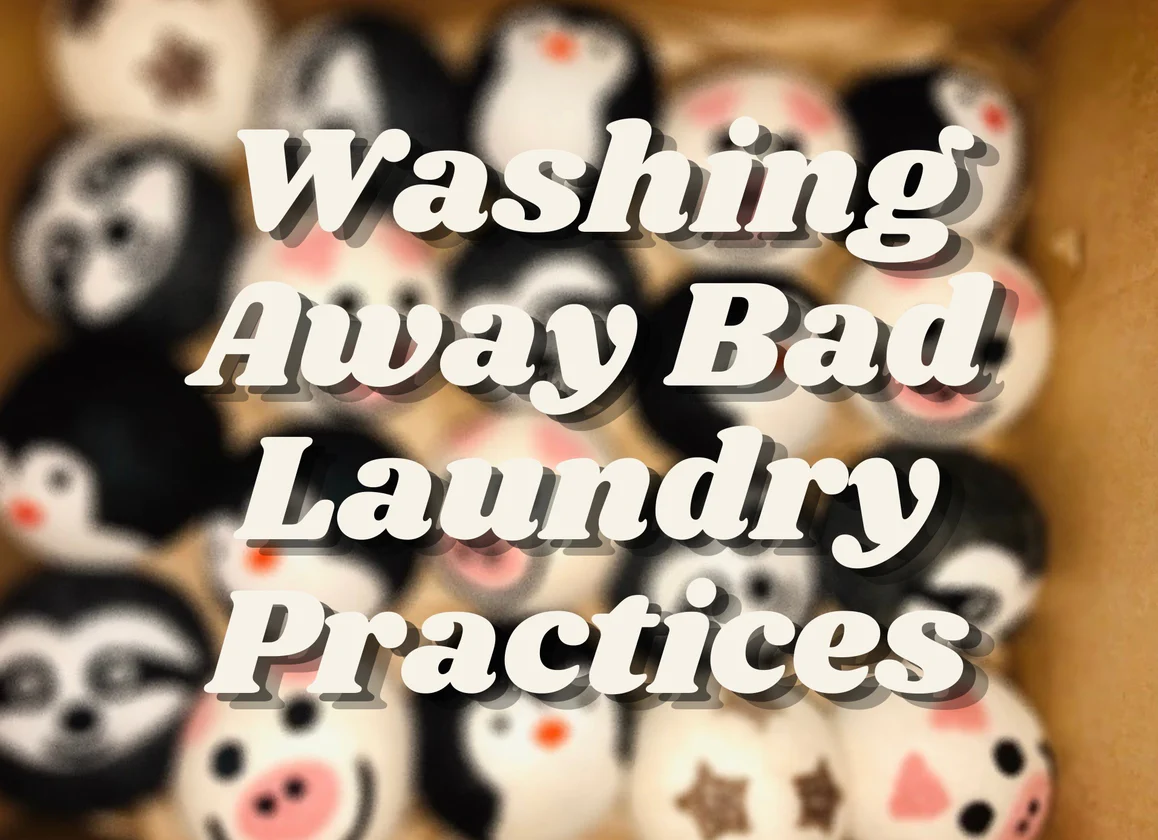Let’s face it, practically everything we do as humans affects the earth. With the mindset of “time is money,” a push for quick convenience has only intensified our negative impacts. Unless you are a billionaire with a personal maid (and if this is you, donate to Overdue!), you inevitably partake in the mundane chore of laundry. We get it, you most likely aren’t going to go out to a river with your washboard and scrub the night away, and we don’t blame you! Sadly, neither are we… come on, we need time to go pick up all that trash on the streets! Regardless, there are several things we can more effortlessly introduce to our laundry routine to cut down on our negative impacts. Keep reading to find out four ways to keep your clothes and climate clean!
1. Go Solid

Each year in North America alone, 700 million plastic laundry bottles are discarded. Shockingly, that’s only part of the problem. Typical non-concentrated liquid laundry detergents are made with up to 60-90% water. That means we are burning more fuel in the shipping process and creating larger plastic containers than we need to. What you end up with is a small percentage of actual laundry detergent and a large percentage of water, which your washing machine would already provide. By removing the excess water and creating solid solutions, companies like Blueland can ship lower weight, greater volumes more efficiently. That’s not their only perk! They arrive right at your door, take up less space in your home, and come in compostable paper packaging. While there are many brands out there, I can personally attest to liking the Blueland laundry tablets and oxi-laundry booster powder combo better than the other eco-brands I have tried. Several eco-friendly brands that are making container free options, such as laundry sheets or laundry pods, still have polyvinyl alcohol (PVOH, PVA) listed in their ingredients (a type of plastic bound to end up in waterways). For this reason, and the lovely fresh scent, I would recommend the Blueland tablet and powder option.
2. Hang Dry

Alright this is the one spot in your new eco-friendly routine that is going to require a little extra effort. Drying a load of laundry requires anywhere from 1800 to 5000 watts of energy. It is imperative that when you buy a washing machine or dryer you look for an energy efficient one. This saves on emissions and your own finances. Hang drying your clothes takes this one step further, as the only energy it requires is your own and it’s free! Moreover, it’s good for your clothes! It extends their lifespan and prevents the damage delicate materials may face in the dryer. Need some air drying tips? Hanging your clothes outside will accelerate the drying process and brighten your clothes. That being said, hang your dark colored items outside of the sun to best retain their deep shades. Consider getting a drying rack or retractable clothing line to make the process easier, but draping across railings or patio furniture works too.
3. Ball Up


There are times when you are in a rush (packing for travel or needing a uniform ready to go) and won’t have time to wait for your clothes to hang dry. You still have options as to making sure you are being eco-friendly! Even those who don’t care about the environment (ew, am I right?), are saying goodby to dryer sheets as they can have a negative effect on your clothes (such as reducing athletic moisture-wicking abilities) and your dryer (leaving a residue on your lint screen that may cause overheating). Friendsheep Eco Dryer Balls are made of 100% premium New Zealand wool and will erase static cling, cut down on drying time, reduce wrinkles, and fluff and soften your load. While these are unscented, the company also sells organic essential oils you can add to the balls to give you any desired scent. I can attest that any organic brand will work and just a few drops goes a long way! Additionally, their fun prints and colors (eco-friendly dyes of course) make these a perfect gift, and at the end of their life, they are completely compostable!
4. Get the Bag


While it is great that so many companies are coming up with ways to repurpose recycled polyesters and other plastic into new clothing, we have to be wary of microplastics. Yes, we need to consider this for all clothing with plastic in it. If you are buying eco-friendly brands, you might assume they are organic materials that don’t require special instruction, but make sure to read your tags! Sadly, unless a garment is made of completely natural materials (such as wool and organic cotton) and untreated with stain resistant and water repellent chemicals, there is no be-all-end-all solution. It is estimated that textiles, at 35%, produce the largest known percentage of marine microplastics. With every load, we worsen the problem. But, we do need clean clothes. The Guppyfriend Washing Bag prevents the breakage of fibers and also retains those that do manage to break by over 90%, meaning those plastics won’t end up inside of our marine friends!
Look out for our future blogs to help introduce more eco-friendly practices into your life!

Leave a Reply
You must be logged in to post a comment.